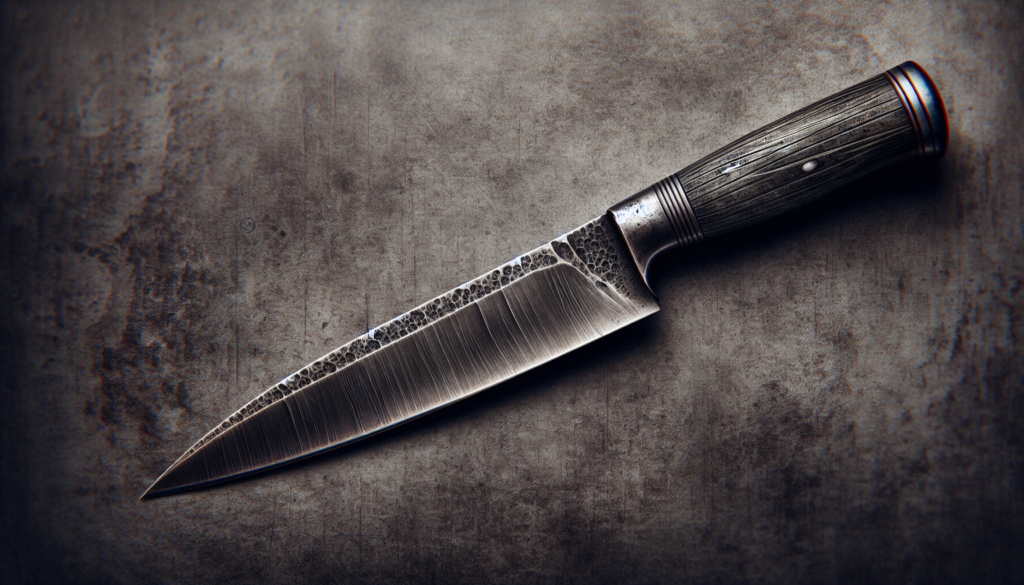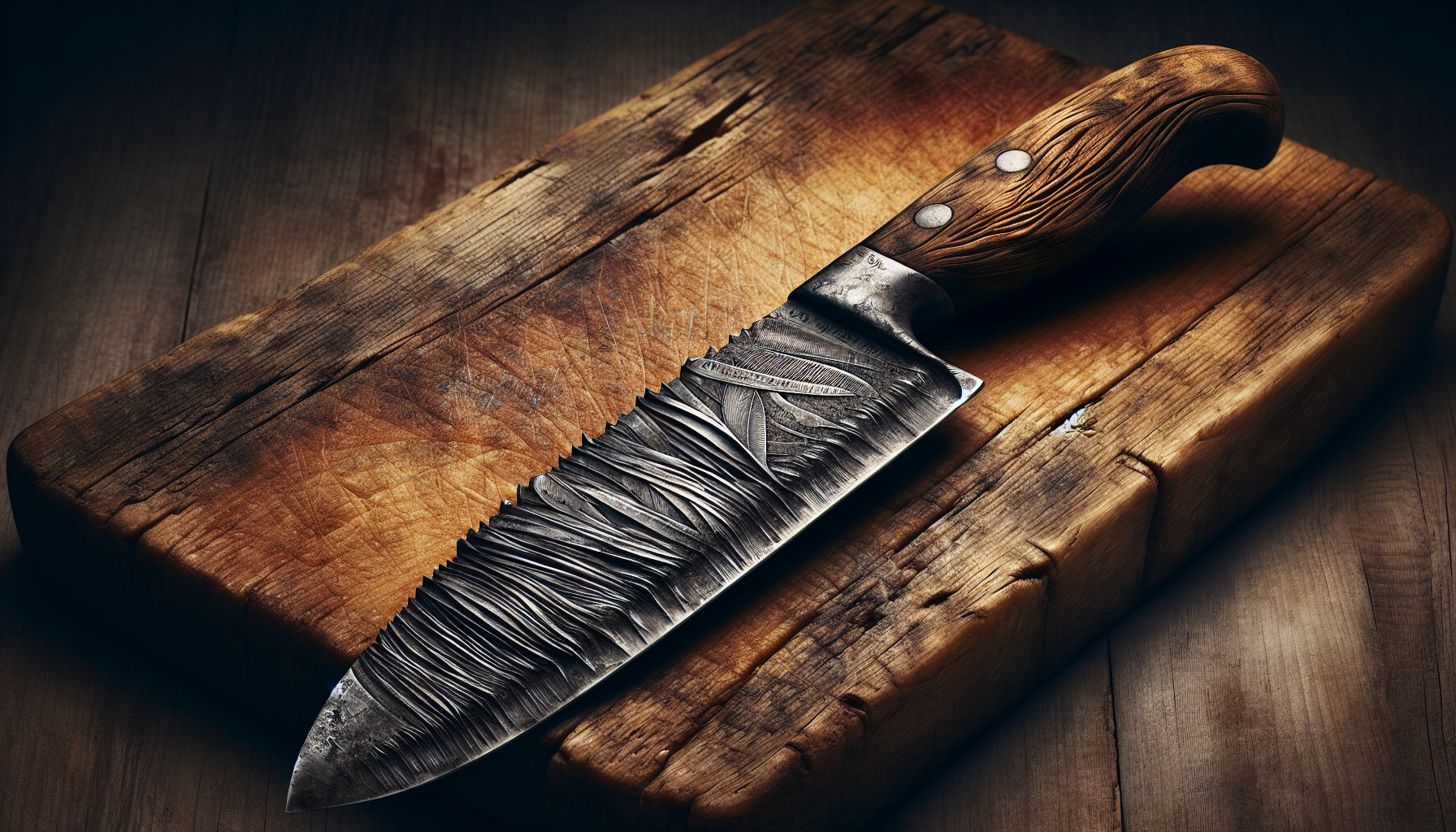Imagine having a set of knives that never seem to lose their sharpness, effortlessly gliding through any ingredient with precision and ease. Now, envision these knives becoming a reliable companion in your culinary adventures, standing the test of time, and remaining a steadfast tool in your kitchen for years to come.
The question arises: how long should a set of knives actually last? In this article, we will explore the factors that determine the lifespan of knives, providing you with insights to help you make informed decisions when investing in your kitchen arsenal.
Factors influencing knife lifespan
When it comes to the lifespan of a knife, there are several factors that can greatly influence its durability and longevity. Understanding these factors is crucial in order to maximize the lifespan of your knives and ensure they stay sharp and effective for as long as possible. Here are the main factors that can affect the lifespan of your knives:
Quality of materials
The quality of the materials used to make a knife can have a significant impact on its lifespan. The most important material in a knife is the steel used for the blade. High-quality steel, such as stainless steel or carbon steel, is more resistant to corrosion and wear, and therefore tends to last longer. Cheaper or lower-quality steel, on the other hand, may rust easily and lose its sharpness quickly.
Another factor to consider is the handle material. While the handle may not directly affect the sharpness of the blade, it can affect the overall durability and comfort of the knife. Handles made from high-quality materials, such as hardwood or synthetic materials like G-10 or Micarta, are more likely to withstand regular wear and tear and provide better grip.
Lastly, the construction of the knife itself plays a role in its longevity. Knives that are poorly constructed or have loose parts are more likely to break or become damaged over time.
Frequency of use
The frequency of use is another important factor to consider when it comes to the lifespan of your knives. If you use your knives on a daily basis, they will naturally experience more wear and tear compared to knives that are only used occasionally. The more often you use your knives, the more quickly they will dull and lose their sharpness.
Furthermore, heavy usage, such as chopping or cutting through thick or hard materials, can accelerate the wearing down of the blade. It’s important to keep this in mind and adjust your expectations accordingly when it comes to the lifespan of heavily used knives.
Proper maintenance
Properly maintaining your knives is essential for keeping them in good condition and prolonging their lifespan. This includes regular cleaning and drying after each use, as well as storing them properly to prevent damage.
Cleaning your knives after use helps to prevent the build-up of food particles and moisture, which can lead to rust and corrosion. It’s important to use mild soap and warm water and to dry the knives thoroughly to avoid any potential damage.
Storing your knives safely is another key aspect of proper maintenance. Knife blocks, sheaths, or magnetic strips are all good options for storing your knives securely, while also protecting the blades from unnecessary contact with other objects that could cause damage.
Lastly, avoiding improper use is crucial for maintaining the lifespan of your knives. Using them for tasks they were not designed for, such as prying or twisting, can lead to chipped or damaged blades.
Type of cutting surface
The type of cutting surface you use can also affect the lifespan of your knives. Cutting boards made from materials such as wood or plastic are generally softer and more forgiving on the blade, reducing the risk of premature dulling. On the other hand, cutting on hard surfaces like glass or marble can quickly wear down the edge of a knife.
It’s important to choose a cutting board that provides a good balance between hardness and durability. Bamboo cutting boards are a popular choice as they are both durable and gentle on your knife blades.
Frequency of sharpening
Regular sharpening is necessary to maintain the sharpness and effectiveness of your knives. The frequency of sharpening will vary depending on how often you use your knives and the type of cutting you do.
There are several tools and techniques available for sharpening knives, such as whetstones, honing rods, or electric sharpeners. It’s important to use the right tools and techniques for your knives to avoid damaging the blades.
The Durability and Longevity of Cast Iron Pans
Signs that indicate the need for sharpening include decreased cutting performance, increased effort required to cut through food, and visible nicks or chips on the blade. However, it’s important not to over-sharpen your knives as this can lead to excessive material removal and reduce their lifespan.
Signs of knife wear
Over time, knives will inevitably show signs of wear and tear. Recognizing these signs can help you determine when it’s time to replace or repair your knives. Here are some common signs of knife wear:
Blade dullness
One of the most obvious signs of knife wear is a dull blade. A dull blade will not cut smoothly and will require more force to cut through food. If you find yourself having to apply more pressure than usual or your knife is not slicing cleanly through food, it may be time to sharpen or replace the blade.
Chipped or damaged blade
Chips or damage to the blade can occur from accidentally hitting hard surfaces or bones during use. These imperfections can affect the cutting ability of the knife and can also pose a safety hazard. If you notice any chips or visible damage on the blade, it’s best to address the issue promptly to prevent further damage.
The Durability and Longevity of Cast Iron Pans
Loose or broken handle
The handle of a knife should provide a secure and comfortable grip. If you notice any looseness or movement in the handle, it could be a sign of wear or poor construction. A broken handle not only compromises the usability of the knife but can also be a safety concern. If the handle is beyond repair, it may be time to replace the knife.
Rust and corrosion
Rust and corrosion can occur when knives are not properly cleaned and dried after each use. If you notice any reddish or brownish spots on the blade, it’s a sign of corrosion. Light surface rust can often be removed with some cleaning, but severe corrosion may require professional help or replacement of the knife.

Average lifespan of knives
The average lifespan of knives can vary widely depending on many factors, including the quality of the materials, frequency of use, and the level of maintenance. While it’s difficult to pinpoint an exact lifespan for a set of knives, it’s useful to consider the experiences and opinions of both professionals and home cooks.
Generally, high-quality knives that are well-maintained can last anywhere from 10 to 30 years or even longer. However, it’s important to note that this is just an estimate and individual experiences may vary.
Certain types of knives, such as those used for heavy-duty tasks like butchering or chopping bones, may have a shorter lifespan due to the extreme pressures they are subjected to. On the other hand, knives used primarily for lighter tasks, such as paring or slicing, may last longer with proper care.
Extending the lifespan of knives
While the lifespan of knives can be influenced by various factors, there are steps you can take to extend their longevity. By following these practices, you can ensure your knives stay sharp and effective for as long as possible:
Choosing high-quality knives
Investing in high-quality knives from reputable brands is a good starting point for maximizing the lifespan of your set of knives. Look for knives made from top-grade steel and consider the reputation of the manufacturer. While high-quality knives may come with a higher price tag, they are often worth the investment due to their superior durability and longevity.
Proper storage for your set of knives
Storing your knives properly is essential for preventing damage and maintaining their sharpness. Avoid throwing them into a drawer where they can become dull from contact with other utensils. Instead, consider using a knife block, a knife sheath, or a magnetic strip to safely store your knives and protect their blades.
Regular cleaning and maintenance
Cleaning your knives after each use and drying them thoroughly is crucial for preventing rust and corrosion. Use mild soap, warm water, and a non-abrasive sponge or cloth to clean your knives, and ensure they are completely dry before storing them.
Regularly inspect your knives for any signs of wear, such as dullness or chipping. Addressing these issues promptly can help prevent further damage and prolong the lifespan of your knives.
Using appropriate cutting surfaces
Choose cutting boards that are gentle on your knife blades, such as wood or plastic. Avoid using glass or marble cutting boards, as they can quickly dull the edge of your knives. Additionally, avoid cutting on hard surfaces like countertops, as this can also damage the blade.
Timely sharpening
Sharpening your knives regularly is essential for maintaining their cutting performance. Pay attention to signs of dullness, decreased cutting ability, or visible damage, and sharpen your knives as needed. Be sure to use the appropriate sharpening tools and techniques for your specific knives to avoid over-sharpening and potential damage.

Conclusion
In conclusion, the lifespan of a knife is influenced by several factors including the quality of materials, frequency of use, proper maintenance, type of cutting surface, and frequency of sharpening. By understanding these factors and implementing proper care and maintenance practices, you can maximize the lifespan of your knives and ensure they remain sharp and effective for years to come. Remember to choose high-quality knives, clean and store them properly, use appropriate cutting surfaces, and sharpen them as needed. With these steps, you can enjoy the longevity and reliability of your knives for many meals to come. Happy cooking!


